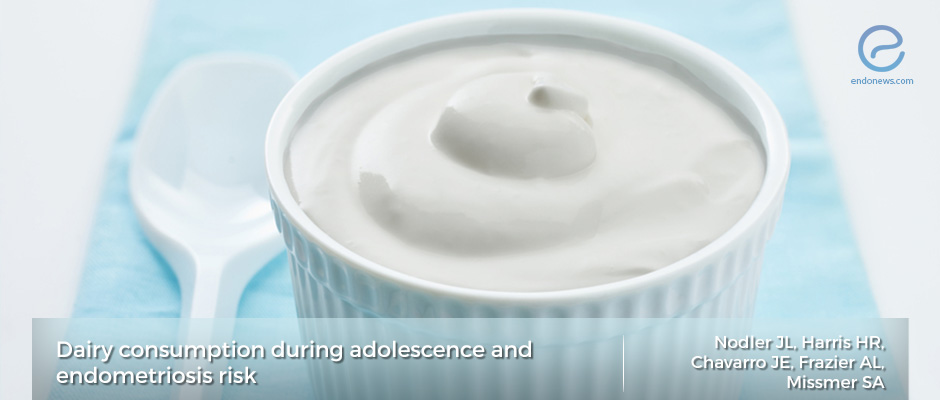Yogurt and ice cream consumption during adolescence may reduce endometriosis
Oct 1, 2019
Girls, let’s have more yogurt and ice cream
Key Points
Highlight:
- Dairy intake in adult was found to be associated with a lower risk of endometriosis.
- The association between endometriosis and dairy intake during adolescence has not been studied.
Importance:
- This study showed that adolescent dairy intake was also associated with lower endometriosis risk.
What's done here:
- A prospective cohort study started in 1989.
- Participants at the ages of 34 to 51 were asked to complete a 124-item food frequency questionnaire about their high school diet.
- Self-reported laparoscopically-confirmed endometriosis was analyzed.
Data:
- 581 cases of premenopausal endometriosis were confirmed.
- Four servings/day of dairy foods during adolescence reduced endometriosis by 32% compared to one or fewer servings/day consumption.
- Low-fat and high-fat dairy foods showed a similar trend.
- Yogurt and ice cream were specifically associated with a lower risk.
- Two or more servings of yogurt per week in adolescent reduced risk of endometriosis by 29% compared to consuming less than one serving per week.
- One or more servings/day of ice cream during adolescence reduced risk of endometriosis by 38% compared to consuming less than one serving per week.
Limitation:
- This is a prospective study and requires participants to recall information from adolescence during adulthood. The long term recall may cause bias.
- The composition of dairy products in the study period (1960-1982) is not completely the same as what is now available.
- The study was unable to quantify the contribution of vitamin D from sun exposure and magnesium intake.
Lay Summary
Dietary factors may affect the development and severity of endometriosis because of estrogen, prostaglandin metabolism, inflammation, or smooth muscle contractility. Studies investigating the relationship between diet and endometriosis have focused on women’s dietary intake during adulthood. For example, the higher intake of dairy in adulthood has been shown to be associated with a lower risk of endometriosis. On the contrary, the current article studied diet during adolescence because the onset of endometriosis is probably during adolescence.
Nodler et al. from Brigham and Women’s Hospital and Harvard Medical School, Boston, Massachusetts, United States evaluated the association between dairy consumption of dairy during adolescence and the subsequent risk of an endometriosis diagnosis in a prospective cohort study started in 1989. The participants in 1998, when ages 34 to 51 were asked to complete a 124-item food frequency questionnaire about their high school diet. The association between dairy food intake and self-reported laparoscopically-confirmed endometriosis were statistically evaluated. There were 581 cases of confirmed endometriosis during this period.
The results showed that women who consumed four servings/day of dairy foods during adolescence had a 32% lower risk of endometriosis as compared to women consuming one or fewer servings/day. Yogurt and ice cream consumption was significantly associated with a lower risk of endometriosis. Two or more servings of yogurt per week reduced the risk by 29% compared to less than one serving per week consumption. In addition, one or more servings/day of ice cream per day reduced the risk of endometriosis by 38% than consuming less than one serving per week. These data were similar for low-fat and high-fat dairy foods.
A number of hypotheses may explain these association, such as vitamin D and calcium content in dairy products that may confer a lower risk of endometriosis by reducing oxidative and inflammatory stress.
While this study is limited by information recall bias and cannot identify the mechanism of the associations, these results nonetheless are important and suggest that adolescent dietary intake counseling approach may be effective in reducing endometriosis. Future in-depth studies into detailed adolescent dietary data are required to confirm results from this current study.
Research Source: https://www.ncbi.nlm.nih.gov/pubmed/31526789
risk factor diet

